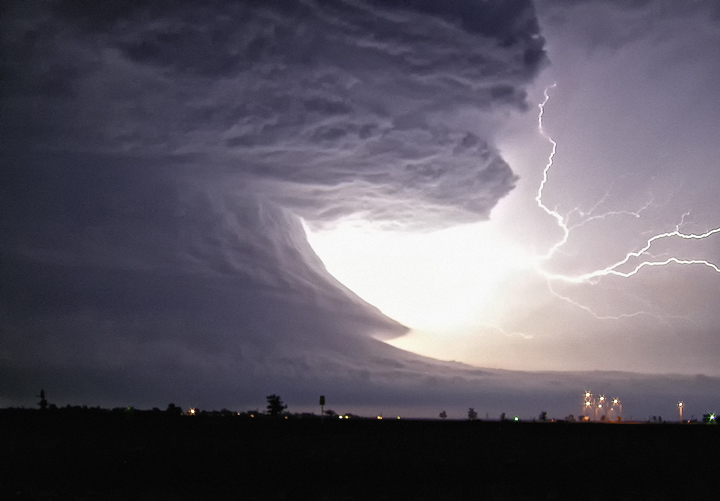TORONTO – As storm chasing season begins in the U.S. Midwest and the start of Emergency Preparedness Week begins here at home, we debunk some severe weather myths.

1. If a tornado is approaching, open windows so your house depressurizes
You look outside and see a tornado approaching. What should you do?
First thing’s first: take shelter. Don’t worry about trying to open up your windows. What causes the most structural damage to your home is the flying debris.
Remember: A house is a house and can be rebuilt. It’s more important that you and your family stay safe. Get to a basement or, if you don’t have one, make sure that you put as many walls between yourself and the outside as you can.
2. If you’re in a car, the safest place is under an overpass
The perception that you’re safer under an overpass gained popularity following a 1991 tornado where a Kansas television crew trying to outrun a tornado reached an overpass and jumped out of their truck, hiding under the bridge. They, along with several other motorists, survived. But that was a relatively weak tornado.
The truth is, hiding under an overpass can be deadly.
“Overpasses can concentrate the tornado winds, causing them to be significantly stronger,” states the National Weather Service. “This places the people under them in an even more dangerous situation.”
This was evident after an EF5 tornado tore through Newcastle, Oklahoma on May 3, 1999. Kathleen Walton and her son took shelter under an overpass, but the winds proved too much: the last words she said to her 11-year-old son were, “I love you,” before she let go of his hand and was swept away. She was killed.
Another issue is that the debris from the tornado becomes concentrated and can cause significant injury.
What should you do?
If you can’t get into a building, get out of your car and try to get to a place that is as low as possible — such as a ditch — and cover your head.
3. If the sky is clear, you’re safe from lightning if a storm is in the distance
Canada receives about two million lightning strikes each year.
In Canada, lightning causes an average of 10 deaths and more than 160 injuries annually. Interestingly, Environment Canada states that just five per cent of those are direct strikes. Ground current (where the lightning hits the ground and the charge carries along the ground) and side strikes (where someone is nearby something that was struck by lightning) account for about 60 to 80 per cent of those deaths and injuries.
Of those strikes, more people are hit before and after a thunderstorm rather than during one. That likely stems from the fact that we falsely believe we are safe once the storm moves on. But a lightning bolt can strike several kilometres from its originating storm system.
Remember: get inside when you hear thunder. Get out of the water and away from tall objects.
4. It’s safe to drive a car or truck through floodwaters
Don’t be fooled: just because you believe that a street is only covered in a few feet of water doesn’t mean you’re safe.
Sometimes water can hide places that are deeper, such as a sinkhole: drive through it and you might find water seeping in from your window.
Another concern is rushing floodwaters. A flash flood could occur, sweeping your vehicle away.

If you see a street covered in water, turn back. Getting to where you’re going isn’t worth your life.
5. Tornadoes don’t hit large cities
Tornadoes aren’t discerning: they just need the right ingredients to form and they don’t care where they get them.
Moore, Oklahoma — the site of 2013’s deadly EF5 tornado — has been hit numerous times. Oklahoma City was struck by a tornado in 1999. Even New York City has experienced tornadoes.

So why don’t we hear about more of them? It’s likely because there are far fewer large cities in relation to the size of the United States and even Canada.
Remember to always keep an eye on the sky and pay attention to your surroundings. And always check the weather so you can be informed about the possibility of severe weather for the day.
To get real-time weather for your area, download the Global News Skytracker weather app.


Comments